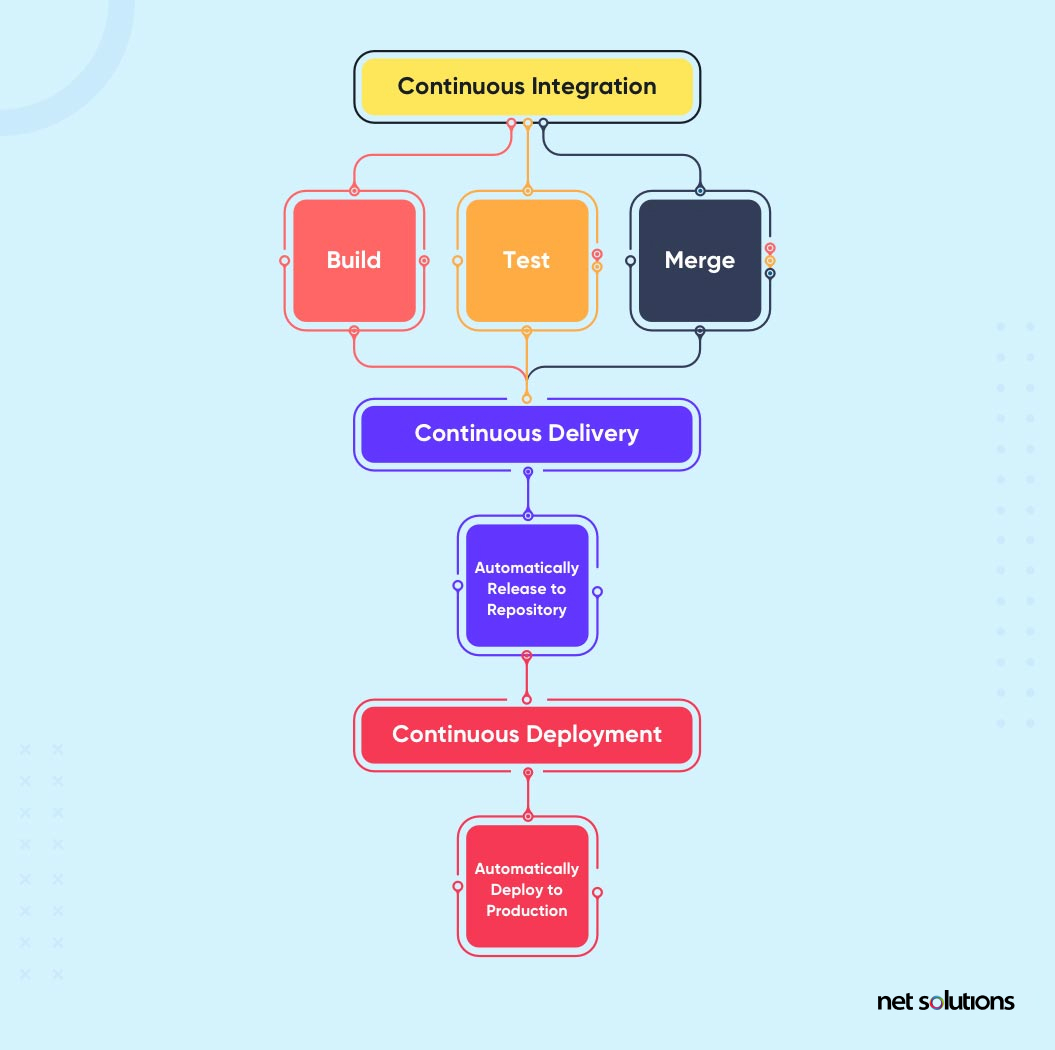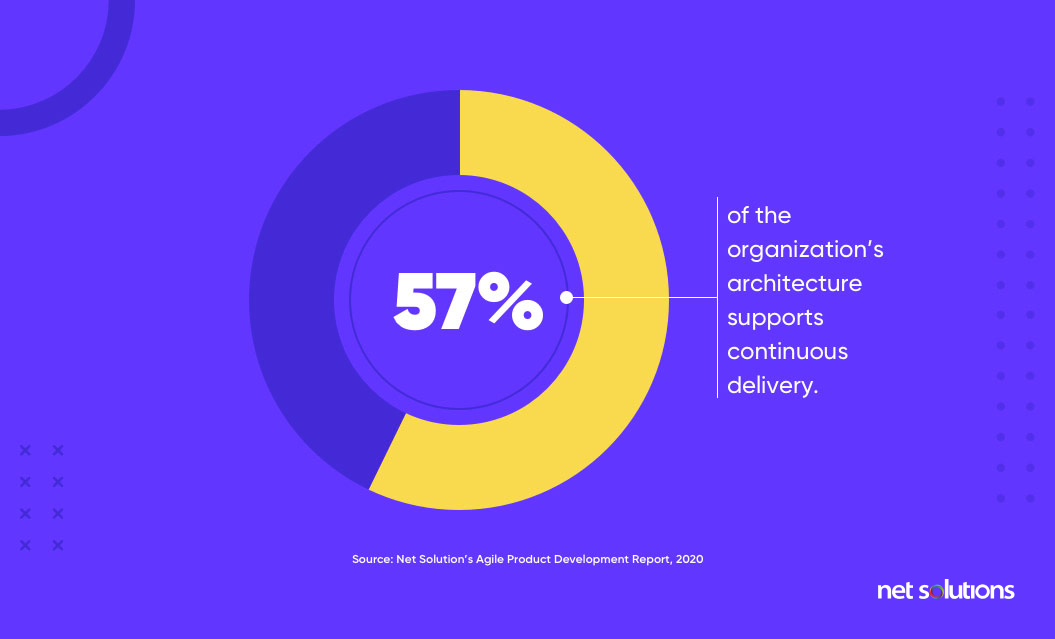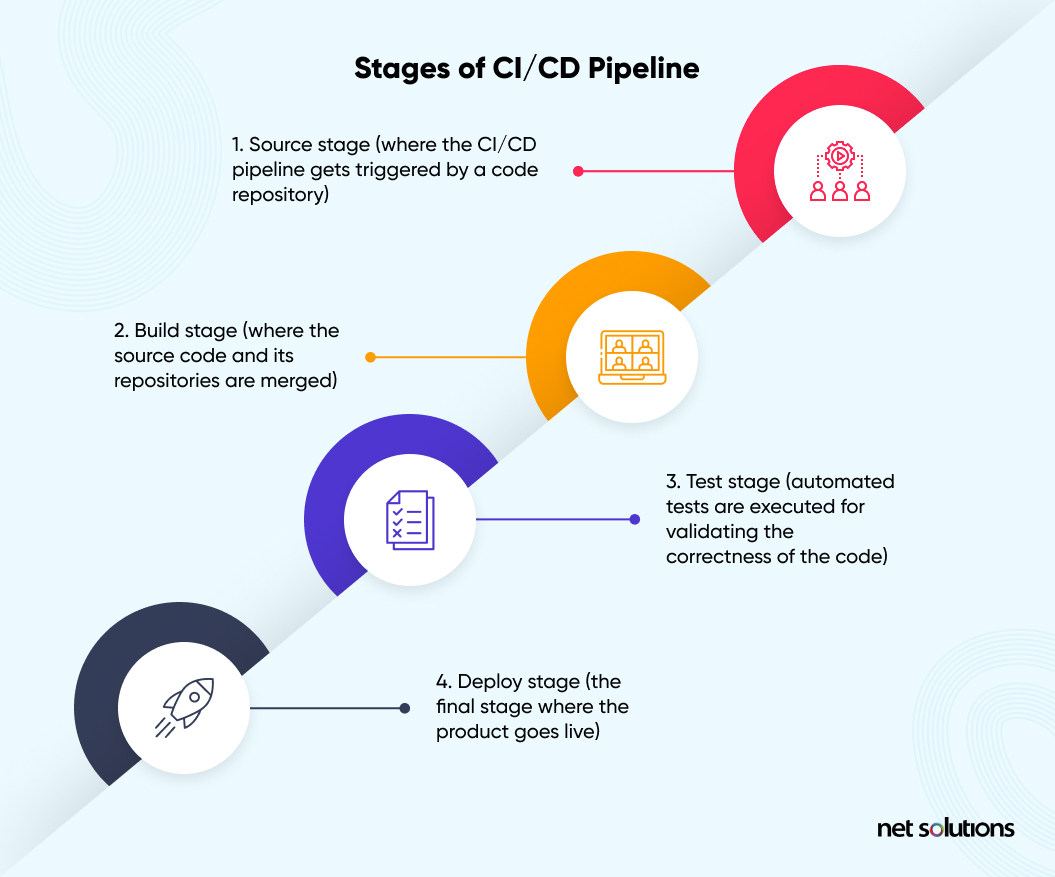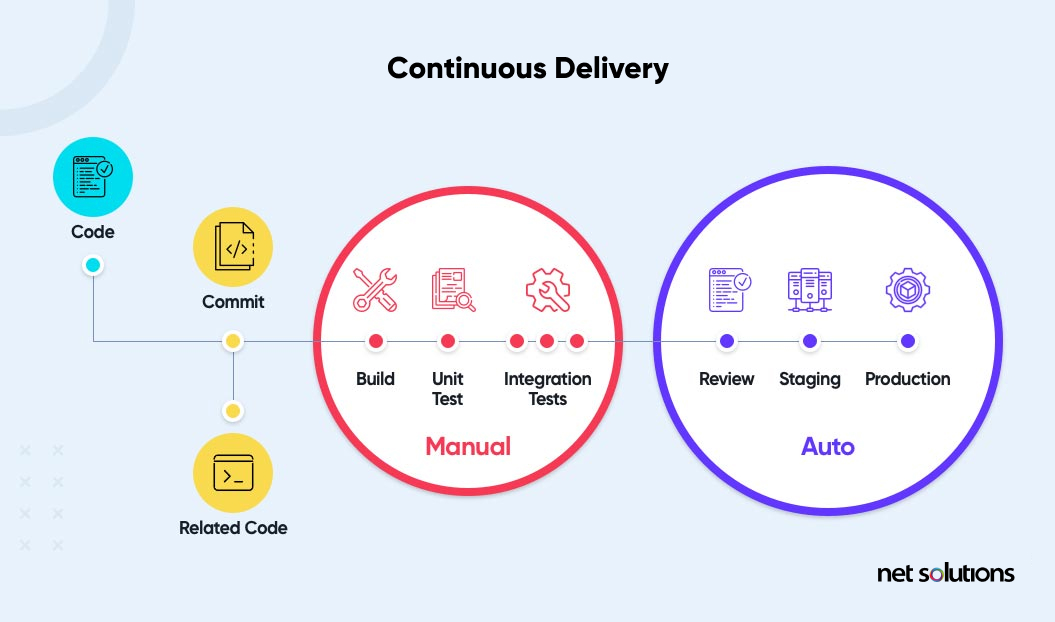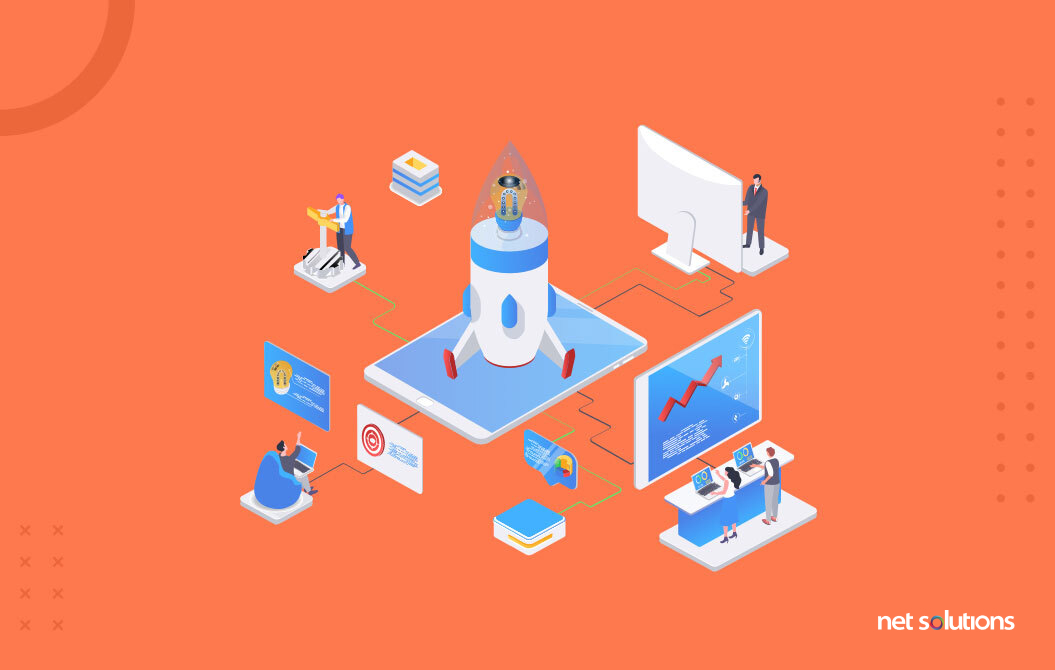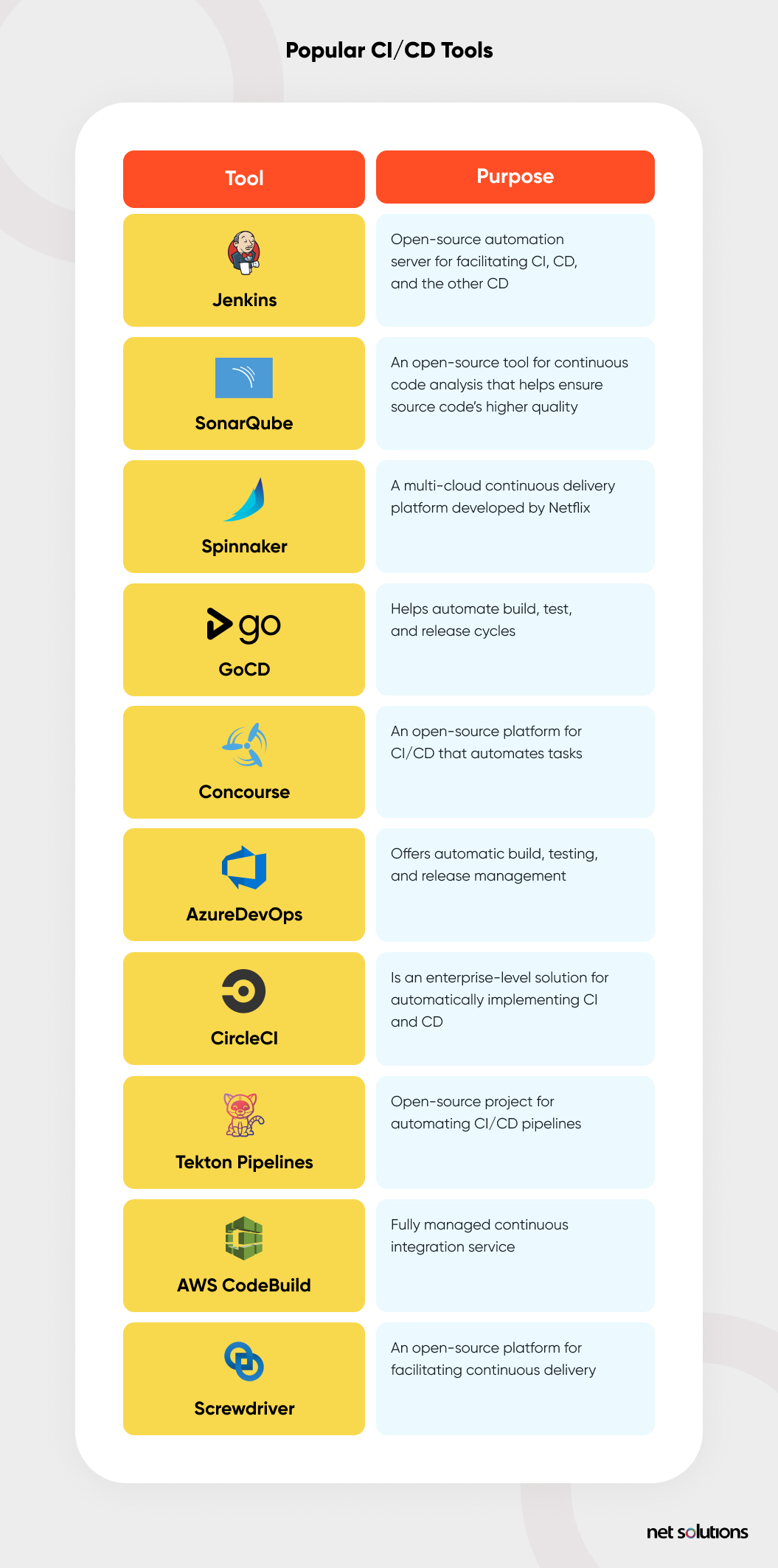Summary IT organizations who have adopted agile processes & transformations or gone towards cloud migration give a lot of weightage to what they call DX (developer experience). This enhances productivity and quality product development. Implementing CI/CD is a priority to ensure faster build, delivery, and deployment cycles, and it helps automate the tasks and is in adherence to the DevOps culture. Below is a detailed analysis of what is CI/CD and the related concepts.
Creating flawless developer experiences in software development has the prime tangential benefit of leading a company towards growth and higher efficiency. CI/CD together help in understanding this flow of developer experience and enhanced productivity. The terms in their complete form mean Continuous Integration, Continuous Delivery, and Continuous Deployment. This model forms an integral part of adopting the DevOps culture, which, in turn, aims at ensuring faster time to market and customer satisfaction.
According to Dzone’s State of CI and CD trend report, DevOps culture-driven organizations increasingly use the model to create SaaS products.
What is CI/CD?
CI is ‘continuous integration’ and has a constant implication, but ‘CD’ can mean two different processes, i.e., continuous delivery and continuous deployment. The CI/CD loop in product development is similar to a factory setup where automated machines assemble and pack items (integration), seal the package, and make it ready for transportation (deliver). Finally, the transport system provides packages to warehouses/shops (deploy).
Here is what each of them means:
1. What is Continuous Integration (CI)?
Continuous integration implies that new user stories in agile are built, tested, and integrated into the existing system. Maintaining the wholeness and the integrity of the software — is the objective of the CI process. To implement continuous integration in Agile, you must push the changes to the more extensive system multiple times (at least daily). Thanks to CI, developers work independently and can create their coding branch to implement small changes.
Instead of writing code independently and submitting once a month, in the CI/CD development process, the developer team can submit the code changes more frequently. When there is continuous testing, it results in faster bug fixes and functionality and, ultimately, results in better collaboration and software quality.
2. What is Continuous Delivery (CD)?
Continuous delivery ensures that the new user stories are automatically tested, then sent back for bug fixtures if needed, automatically retested, and sent to a central repository. We can then release the new features to the production environment.
Continuous delivery aims to ensure that every change to the code can be deployed to a live environment and is bug-free, efficient, effective, workable, and reliable.
3. What is Continuous Deployment (CD)?
Continuous deployment implies the automatic release of the new user stories in a central repository, meaning newly added features are available to the end-users. It releases code changes to end-users after a series of predefined tests, such as integration tests that test code in a duplicate environment to ensure code integrity.
Continuous deployment is closely related to continuous integration. It refers to the release into the production of software that passes the automated tests – Jez Humble & David Farley, Author of Continuous Delivery.
This tweet by Martin Fowler nicely sums up the crux of what is ci/cd, or – continuous delivery and continuous deployment:
Continuous Delivery means you ensure every change can be deployed to production. Continuous Deployment means you deploy every change.
— Martin Fowler (@martinfowler) May 14, 2015
What is the difference between CI/CD?
Besides understanding what ci/cd is, it is essential to understand the difference in these concepts and how these work together. The “CI” in CI/CD always refers to developers’ continuous integration and automation. Successful CI means new code changes to an app are regularly built, tested, and merged to a shared repository. However, the greatest challenge for many development teams is feature development, and many organizations remain under pressure for fast delivery with innovation and quality.
The solution is to employ CI to integrate development changes in an automated fashion, improving the feature development process.
Continuous delivery (CD) enables operational teams and workflows. The objective is to safely and continually deliver an artifact into a production environment. The CD process helps automatically operationalize services and releases, deploys, and monitors applications. Adding additional tests to your testing process allows early detection of issues before customers face them.
How CI and CD Work Together
In product development processes, CI and CD work together to ensure the capability to fix defects and potential production failures or incidents that can be otherwise detrimental to a business. Agile product development trends reflect that introducing CI/CD leverages automation in the process. The CI/CD pipelines are automated delivery pipelines, denoting the software development life cycle (SDLC). They also make it easier to understand, improve and change the SDLC.
CI/CD and DevOps
So now you have a fair idea of what is ci/cd.Let’s understand the relationship between CI/CD, Agile, and the DevOps culture..
The agile process involves:
- removing barriers,
- ensuring workflow coordination,
- resulting in rapid software production,
- collaborating closely with customers,
- responding to (rather than resisting) change.
CI helps teams integrate their work, and it facilitates building & testing, focusing on achieving a software-defined cycle. CD or Continuous delivery then means packaging and deployment of what CI builds & tests. Efficient CI/CD directly helps agile development because software changes reach production more frequently. Hence, customers get more opportunities to experience and provide feedback on changes.
DevOps solutions take into consideration the limitations of the particular culture and roles. The barriers between Operations and Engineering get dissolved with DevOps since each team is trained in the other’s skills.GitLab’s DevSecOps survey observed a rapid elevation in automation, release cadences, continuous deployments, security postures, and growing dependence on next-gen technologies like A.I., ML, and so on..
What is the symbiosis we are talking about here, then?
The practice of CI/CD in DevOps adds to agile development. In sum:
- Agile focuses on processes that accommodate change while speeding up delivery.
- CI/CD focuses on software-defined life cycles based on tools that emphasize automation.
- And DevOps focuses on culture, emphasizing roles that give importance to responsiveness.
What is CI/CD Pipeline?
Moving ahead after understanding what is ci/cd, here’s a look at what the CI/CD pipeline refers to. The CI/CD pipeline is a series of automated steps and processes to deliver new features to the end-users. This pipeline is about building, testing, merging, adding the latest version to a central repository, and releasing it. CI/CD Pipeline follows the DevOps approach to accomplish the mentioned goal.
Continuous integration and delivery are vital yet distinct components of the CI/CD pipeline. Continuous integration comprises constant code merging in the repository, automated building, and regular build testing. This is the advantage of using continuous integration to produce builds while continuous delivery focuses on the rest. A promising CI/CD pipeline is fast, reliable, and accurate.
What are the different stages of the CI/CD pipeline?
What is the cost of the CI/CD Pipeline?
The cost of implementing a CI/CD pipeline is high as you are introducing automation to the system. Training, operations, and rollout can cost big money. These costs will exist whether you leverage a SaaS or run it yourself. The upfront costs need to be looked into beforehand. There are hidden costs too that you need to watch out for, some tradeoffs worth thinking about, and then mitigating common pitfalls to optimize your CI/CD expenditure.
While getting started with CI/CD can seem daunting, the benefit of implementing it is worth the effort. Ultimately, the highest cost is the cost of not taking action, not doing anything at all.
Here are some resources you need for successfully implementing the CI/CD pipeline:
- Writing and running automated deployment tests
- Investing in CI/CD tools
- Access to the CI server.
The CI/CD Process
Here’s an analogy to help understand the CI/CD workflow. Assume you have two SaaS developers on the team who have been working remotely on the code for the same SaaS application.
The process they follow is
Step 1: Adding the individual code fragment to a central repository daily.
Step 2: The code automatically shifts to the CI server, where — build, test, and integration occurs for each code fragment.
This step usually involves unit tests (where individual components of the more extensive code are continuously tested) to ensure that codes provided by both the developers flawlessly fit into the existing software product.
Step 3: Next, developers run the acceptance tests, then staging the integrated software in an environment similar to production. It is known as the deployment pipeline, consisting of a development environment, a testing environment, and a staging environment. When the deployment to staging process becomes automatic, deployment to production gets manually executed. After the manual deployment to production, automated smoke tests are conducted (a test that checks the deployesoftware’s stability).
If the test fails at any stage of the deployment pipeline, it will not move to the next step. The developers can easily detect and re-iterate the issue through the deployment pipeline to ensure continuous delivery.
Step 4: Finally, both the developers create the code that is automatically sent to production. It is only possible when the respective code successfully passes through continuous integration and continuous delivery processes.
Importance of CI/CD
As per GitLab’s DevSecOps survey, a rapid elevation was observed in automation, release cadences, continuous deployments, security postures, and growing dependence on next-gen technologies like A.I., ML, and so on.
The general process of the software development cycle involves — multiple developers working on different features simultaneously. Now, if the disintegrated code were to be merged one day, it could be manually exhausting, time-consuming, and messy, and the functioning of the entire system could fall off track.
Moreover, if the developers work in independent teams, their code might not sync well with the other team’s code — leading to a more hay-wired setup.
It is similar to postponing your meetings each day and aligning them together on a particular day and, in turn, increasing your burden while reducing your enthusiasm and productivity.
With continuous integration (CI), the code is merged to the mainline (shared repository) frequently, often multiple times a day. The changes undergo automatic software tests (unit and integration tests) to validate the application’s wholeness and integrity.
Once the changes are validated and everything is in place and working, continuous delivery ensures that the new workable system is added to the mainline. Finally, constant deployment steps in, i.e., the latest version of the software is made available to the end-users.
With CI/CD, you can regularly align your meetings to tend to minor issues rather than the “all at once” approach.
As per a recent report by Statista, besides container technology, CI/CD is amongst the technologies that OpenStack users wish to adopt.
Benefits of CI-CD
Automation is the idea behind implementing CI/CD. The processes help ensure minimal sign-offs and manual authentications — that otherwise hurt the lead time.
Besides getting a detailed picture of what is ci/cd, it is so essential to understand the significant benefits of CI/CD. The CI/CD process helps mitigate risks, reduces overhead costs, and lends consistency to the build process. Besides this, the benefits are as below:
1. Increased Focus on Core Responsibilities
The development and the operations team (DevOps) can focus on their core competencies. Also, teams do not have to wait for manual sign-offs between them for executing integration, delivery, and deployment — as everything will be automated.
2. Development of an Agile Mindset
When developers contribute to the software code daily, they must fix bugs on the go. The execution speed will automatically increase. CI/CD is the most efficient way to promote the agile mindset within the development and operations team.
PS – Before embracing the Agile mindset, it is essential to leverage the Product mindset over the Project mindset.
3. Better Code Quality
A system’s chances are reduced, with code being added to the central repository almost daily. These everyday additions make continuous integration and delivery easier as there are small code fragments to deal with, thus less probability of emerging anti-patterns and bugs.
4. Ensures Faster Time to Market
The CI/CD pipeline ensures that automation takes over the integration, delivery, and deployment process, which further leads to — a faster time to market. The main objective of CI/CD is to reduce the time to market that otherwise used to take years due to broken processes and minimal collaboration between development and operations.
5. Helps Maintain Shipping Cadence
With continuous integration, delivery, and deployment — the code can be released to the end-users promptly. The timely deliveries mean that the time between the MVP release and the fully-fledged product will get reduced. In turn, it will further help gather feedback early and schedule product refinement.
Tools to use for CI/CD
Here is a collaborative list of ten standard CI/CD tools available in the market.
Best CI/CD Practices
Jez Humble introduced a “Continuous Integration Certifica”ion” test that acts as a KPI (key performance indicator) for organizations implementing CI/CD. Based on the test, here are some of the best practices that ensure the success of your CI/CD pipeline:
- Every developer adds the smaller fragment of code to the central repository at least daily
- Every source code addition leads to automated testing and automated integration ceremonies
- If the computerized testing shows some error, the bug is detected and fixed within ten minutes
Continuous integration, delivery, and deployment should be the focus if you need a successful CI/CD. The best CD is done with minimal tools.
CI/CD will work best when you:
- Build once and then streamline the tests.
- Make sure CI/CD is making it simpler to fix broken builds.
- Ensure continuous automation
- Enable easy feedback receiving & contribution for the teams.
- Establish monitoring as it helps in saving time and money.
Organizations that give due weightage to developer experience (DX) and can align to Agile, DevOps, and CI/CD frameworks ultimately benefit from higher & more efficient growth experiences.
Frequently Asked Questions
1. What are the examples of CI/CD pipelines?
A CI/CD pipeline helps developers focus on writing codes and monitoring system behavior. The faster the feedback, the higher the organizational growth and learning. Some examples of the pipeline are:
- Source Code Control
- Continuous integration
- Deploy code to UAT
- Deploy to production
2. What are the parameters for measuring the CI/CD performance?
It is only when you measure some aspect of any development process that you can also manage it – and put forth further improvements needed. CI/CD are two cornerstones for improving the process of building, testing, and releasing software. You can measure it with the following:
- Deployment Time
- Development Frequency
- Change Lead Time
- Change Failure Rate
- MTTR vs. MTTF
3. How does CI/CD help I.T. specialists?
CI/CD allows an organization to improve performance in software development. Precisely, therefore we can say it helps I.T. specialists in this manner:
- Enable them to pull code from version control and execute software build
- Help them move code to the target computing environment
- Enhance reliability
- Provide log data & alerts on the delivery state
- Assist them in verifying code changes before moving forward, minimizing the scope of defects ending up in production
Ship Better Software, Faster
Talk to our experts to automate your cloud infrastructure and accelerate software delivery.


 Updated: July 6, 2022
Updated: July 6, 2022


